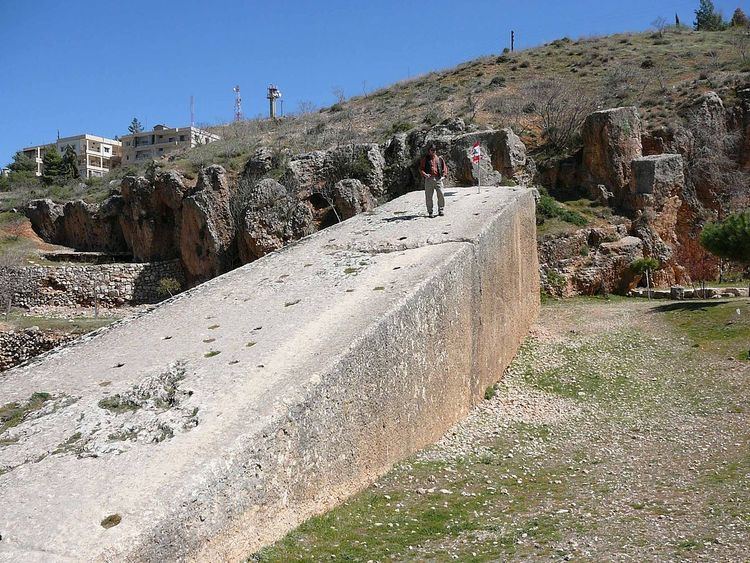 | ||
Similar Temple of Jupiter (Roman, Temple of Bacchus, Temple of Eshmun, Toron, Temple of Jupiter - Split | ||
The Stone of the Pregnant Woman (Arabic: Hadjar el Hibla) or Stone of the South is a Roman monolith in Baalbek (ancient Heliopolis), Lebanon. Together with another ancient stone block nearby, it is among the largest monoliths ever quarried. The two building blocks were intended for the nearby Roman temple complex, possibly as an addition to the so-called trilithon, and are characterised by a monolithic gigantism that was unparallelled in antiquity.
Contents
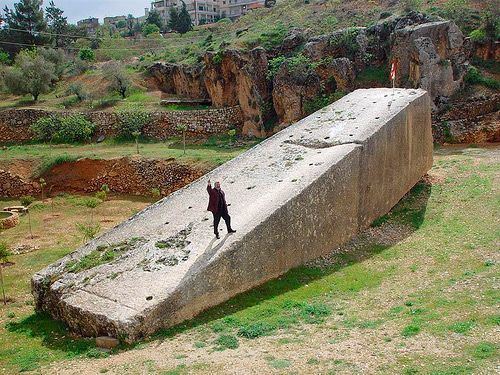
Baalbek
Name
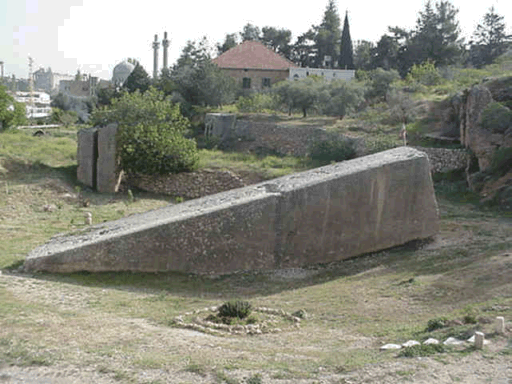
There are multiple stories behind the name. One says the monolith is named after a pregnant woman who tricked the people of Baalbek into believing that she knew how to move the giant stone if only they would feed her until she gave birth. Others say the name comes from the legends that pregnant jinn were assigned the task of cutting and moving the stone, while others say that the name reflects the belief that a woman who touches the stone experiences an increase in fertility.
Location
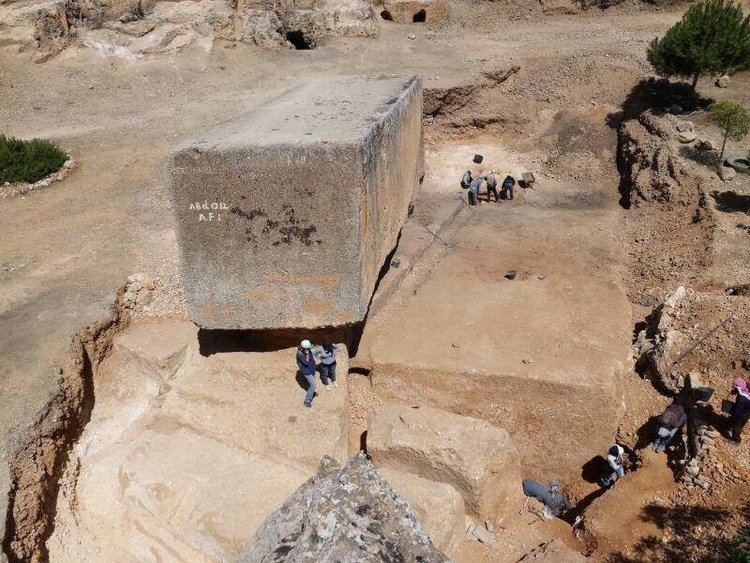
The stone block still lies in the ancient quarry at a distance of 900 m from the Heliopolis temple complex. In 1996, a geodetic team of the Austrian city of Linz conducted topographical measurements at the site which aimed at establishing the exact dimensions of the two monoliths and their possible use in the construction of the gigantic Jupiter temple. According to their calculations, the block weighs 1,000.12 t, thus practically confirming older estimations such as that of Jean-Pierre Adam.
The rectangular stone block is:
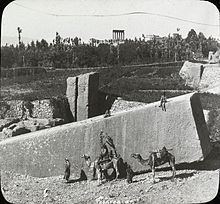
Second monolith
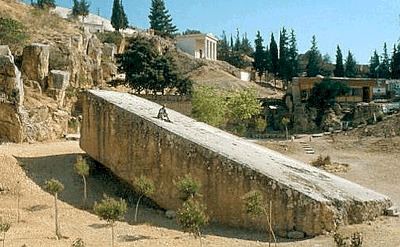
A second ancient monolith was discovered in the same quarry in the 1990s. With its weight estimated at 1242 t, it surpasses even the dimension of the Stone of the Pregnant Woman.
These are dimensions of the rectangular stone block, assuming that its shape is consistent in its still-buried parts:
Third monolith
The Stone Of Janeen

A third ancient monolith was discovered in the same quarry in 2014 by the German Archaeological Institute and named "Janeen" which means in Arabic the baby infant. Its weight is estimated at around 1650 t, making it the largest stone ever carved by human hands.
It measures:
